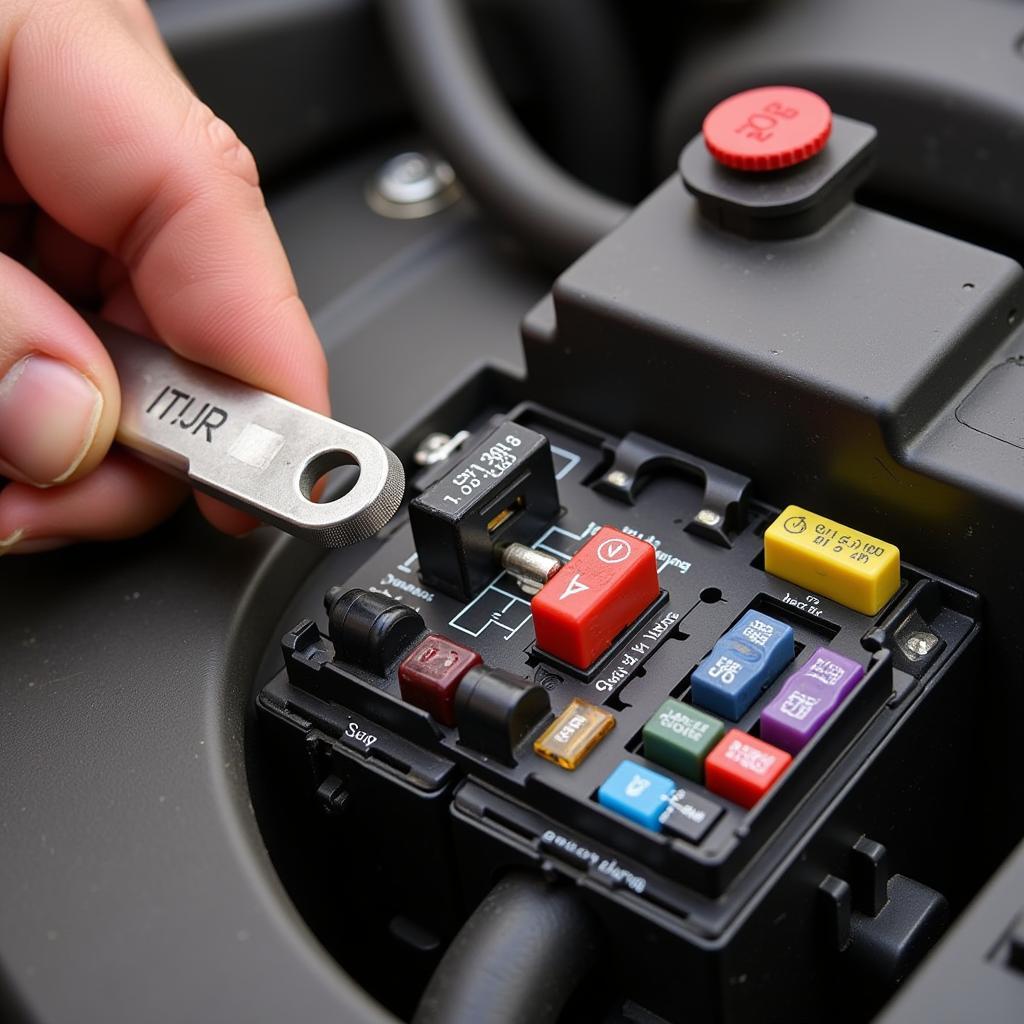Finding a cheaper way to fix a car AC is a top priority for many drivers, especially during those scorching summer months. Nobody wants to be stuck in traffic with a broken AC system. This article will explore various cost-effective solutions for troubleshooting and repairing your vehicle’s air conditioning, empowering you to make informed decisions and save money.
Understanding Your Car’s AC System
Before diving into the cheaper way to fix a car AC, it’s helpful to understand the basic components and how they work together. The AC system is a closed loop, circulating refrigerant that absorbs heat from the cabin and releases it outside. Key components include the compressor, condenser, evaporator, and expansion valve. A malfunction in any of these parts can lead to a less-than-chilly experience.
Common AC Problems and Cheaper Way to Fix a Car AC
Several issues can plague your car’s AC, ranging from simple fixes to more complex problems. Identifying the root cause is crucial for finding the most affordable solution. Here are some common culprits:
- Low Refrigerant: One of the most frequent issues is low refrigerant levels due to leaks. A recharge might seem like a cheaper way to fix a car AC temporarily, but it won’t address the underlying leak.
- Electrical Issues: Problems with the AC compressor clutch, fuses, or wiring can prevent the system from engaging. Checking these electrical components yourself can save you diagnostic fees.
- Clogged Condenser: The condenser, located at the front of the vehicle, can become clogged with debris, restricting airflow and reducing cooling efficiency. Cleaning the condenser can be a cheaper way to fix a car AC than replacing it.
- Faulty Expansion Valve or Orifice Tube: These components regulate refrigerant flow. A malfunction can lead to inconsistent cooling or complete system failure.
 Car AC System Components Diagram
Car AC System Components Diagram
DIY Diagnosis and Repairs: A Cheaper Way to Fix a Car AC
For the mechanically inclined, some AC repairs can be tackled at home, offering a significantly cheaper way to fix a car AC. Simple tasks like checking fuses, visually inspecting the compressor belt, and cleaning the condenser can often be done with basic tools.
How to Check Your AC Fuses
- Locate the fuse box (check your owner’s manual).
- Identify the AC fuse(s) using the diagram on the fuse box cover.
- Remove the fuse and inspect it for a broken filament. Replace if necessary.
 Mechanic Checking Car AC Fuse
Mechanic Checking Car AC Fuse
Cleaning the Condenser: A Cheaper Way to Fix a Car AC
Carefully clean the condenser fins using a fin comb or a soft brush and gentle water pressure. This can improve airflow and cooling performance. Remember to exercise caution and avoid damaging the delicate fins.
When to Seek Professional Help
While some repairs can be DIY projects, more complex issues like compressor replacement or leak detection require specialized equipment and expertise. In these cases, seeking professional help is the best course of action.
“Regular maintenance is key to preventing costly AC repairs,” advises John Miller, a certified automotive technician with over 20 years of experience. “Simple checks and preventative measures can save you a lot of money in the long run.”
Finding Affordable Professional Repair: A Cheaper Way to Fix a Car AC
Even when professional help is needed, there are ways to find a cheaper way to fix a car AC:
- Shop Around: Get quotes from multiple repair shops to compare prices.
- Ask About Refurbished Parts: Using refurbished parts can be a cost-effective alternative to brand-new components.
- Consider Independent Shops: Independent shops often offer lower labor rates compared to dealerships.
“Don’t be afraid to negotiate,” says Sarah Johnson, an automotive consultant. “Many shops are willing to work with you on pricing, especially during the off-season.”
Conclusion
Finding a cheaper way to fix a car AC involves understanding the system, identifying the problem, and exploring DIY solutions or finding affordable professional help. By following the tips outlined in this article, you can keep your car cool without breaking the bank. Need further assistance with your car AC? Connect with AutoTipPro for expert advice. Contact us at +1 (641) 206-8880 or visit our office at 500 N St Mary’s St, San Antonio, TX 78205, United States.
FAQ
- How often should I recharge my car’s AC? You shouldn’t need to recharge your AC unless there’s a leak. A properly functioning system should hold refrigerant for years.
- How can I tell if my AC compressor is bad? Signs of a bad compressor include loud noises, inconsistent cooling, and warm air blowing from the vents.
- Is it safe to drive with a broken AC? While driving with a broken AC isn’t inherently unsafe, it can be uncomfortable and potentially dangerous in extreme heat.
- How much does it cost to replace a car AC compressor? The cost can vary depending on the vehicle make and model, but it typically ranges from $500 to $1,200.
- Can I use any type of refrigerant in my car’s AC? No, using the incorrect type of refrigerant can damage the system. Consult your owner’s manual or a professional to determine the correct type.
- How can I prevent future AC problems? Regular maintenance, such as annual inspections and cleaning the condenser, can help prevent future AC issues.
- What’s the cheapest way to fix a car AC? The cheapest way is often through DIY fixes like checking fuses and cleaning the condenser. However, for complex problems, seeking affordable professional repair is recommended.





Leave a Reply